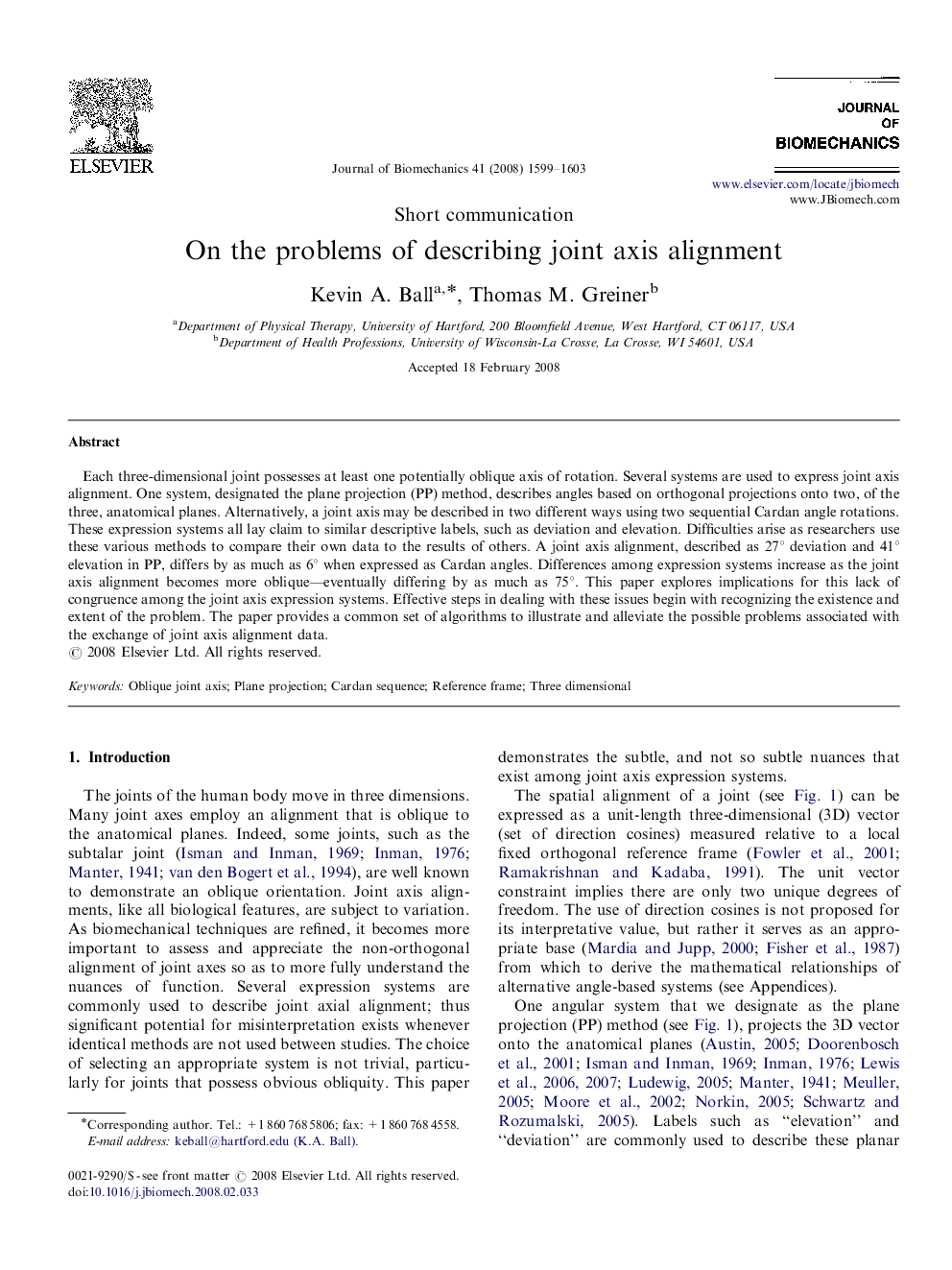| Article ID | Journal | Published Year | Pages | File Type |
|---|---|---|---|---|
| 875287 | Journal of Biomechanics | 2008 | 5 Pages |
Each three-dimensional joint possesses at least one potentially oblique axis of rotation. Several systems are used to express joint axis alignment. One system, designated the plane projection (PP) method, describes angles based on orthogonal projections onto two, of the three, anatomical planes. Alternatively, a joint axis may be described in two different ways using two sequential Cardan angle rotations. These expression systems all lay claim to similar descriptive labels, such as deviation and elevation. Difficulties arise as researchers use these various methods to compare their own data to the results of others. A joint axis alignment, described as 27° deviation and 41° elevation in PP, differs by as much as 6° when expressed as Cardan angles. Differences among expression systems increase as the joint axis alignment becomes more oblique—eventually differing by as much as 75°. This paper explores implications for this lack of congruence among the joint axis expression systems. Effective steps in dealing with these issues begin with recognizing the existence and extent of the problem. The paper provides a common set of algorithms to illustrate and alleviate the possible problems associated with the exchange of joint axis alignment data.
